Back First Aid Explained
How to do Basic First Aid
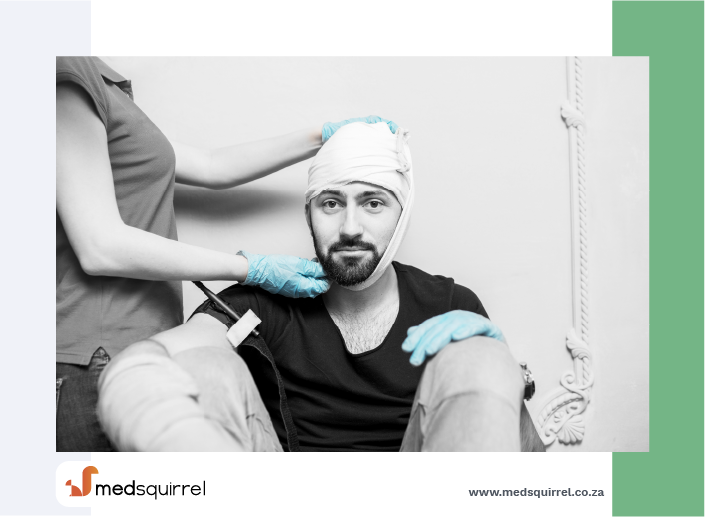
We have selected the following expert medical opinion based on its clarity, reliability and accuracy. Credits: Sourced from the website wikiHow. Please refer to your own medical practitioner for a final perspective, assessment or evaluation.
Overview
Basic first aid refers to the initial process of assessing and addressing the needs of someone who has been injured or is in physiological distress due to choking, a heart attack, allergic reactions, drugs or other medical emergencies. Basic first aid allows you to quickly determine a person's physical condition and the correct course of treatment. You should always seek professional medical help as soon as you are able, but following correct first aid procedures can be the difference between life and death. Follow our entire tutorial, or find specific advice by checking out the sections listed above.
1: Performing the Three Cs
1. Check the surroundings
Evaluate the situation. Are there things that might put you at risk of harm? Are you or the victim threatened by fire, toxic smoke or gasses, an unstable building, live electrical wires or other dangerous scenario? Do not rush into a situation where you could end up as a victim yourself. This refers to the D (Danger) in DRABC (Danger, Response, Airways, Breathing and Circulation).
- If approaching the victim will endanger your life, seek professional help immediately; they have higher levels of training and know how to handle these situations. First aid becomes useless if you can't safely perform it without hurting yourself.
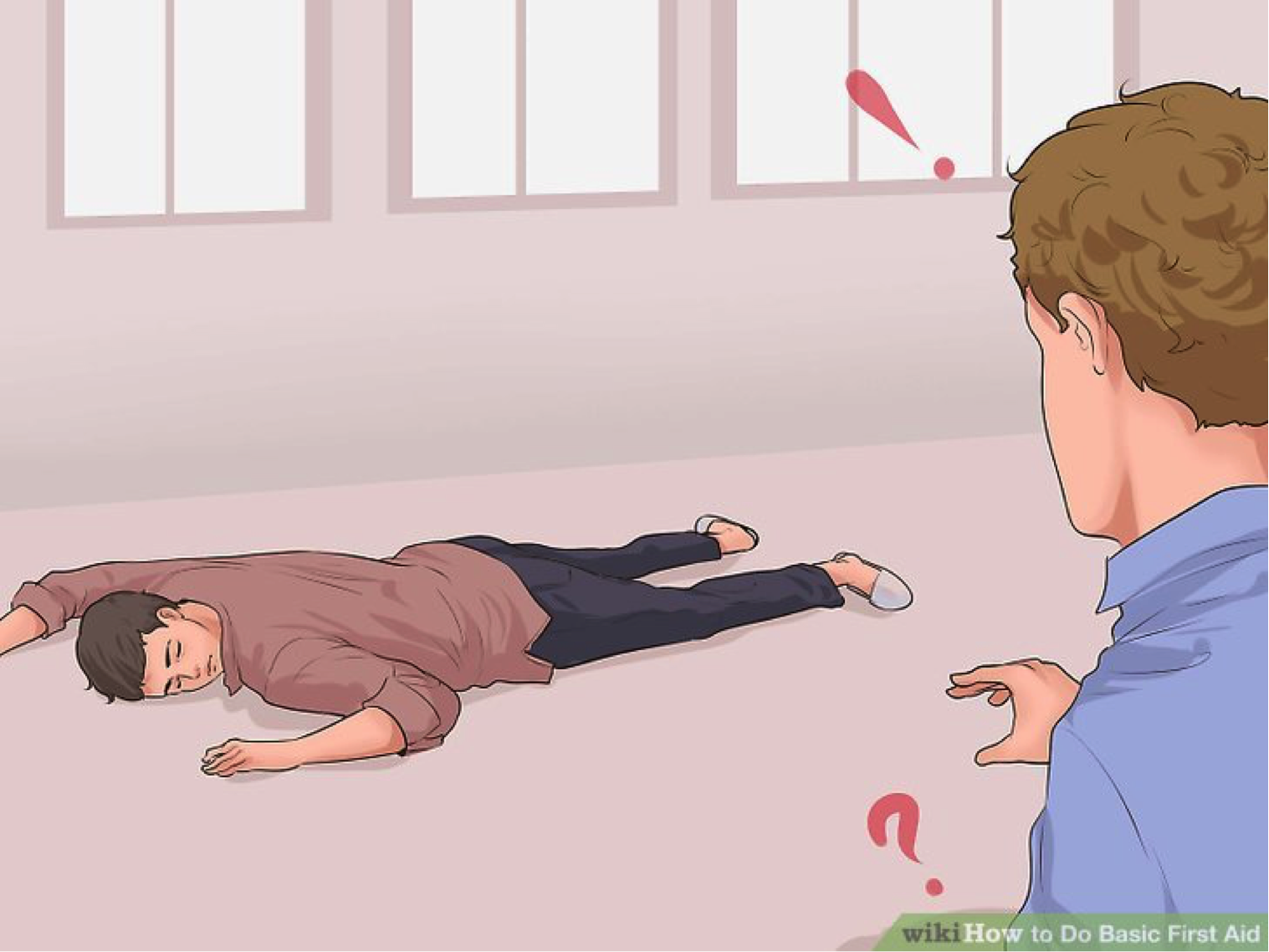
2. Call for help (see "EMERGENCY NUMBERS" above)
Call out for help 3 times before you begin assisting the casualty. If someone is with you or approaches, instruct them to call the authorities and be prepared to relay information to them so they can update the responders. It is not recommended that you leave the casualty unless absolutely required, but put them in the recovery position if you need to leave them for any reason.
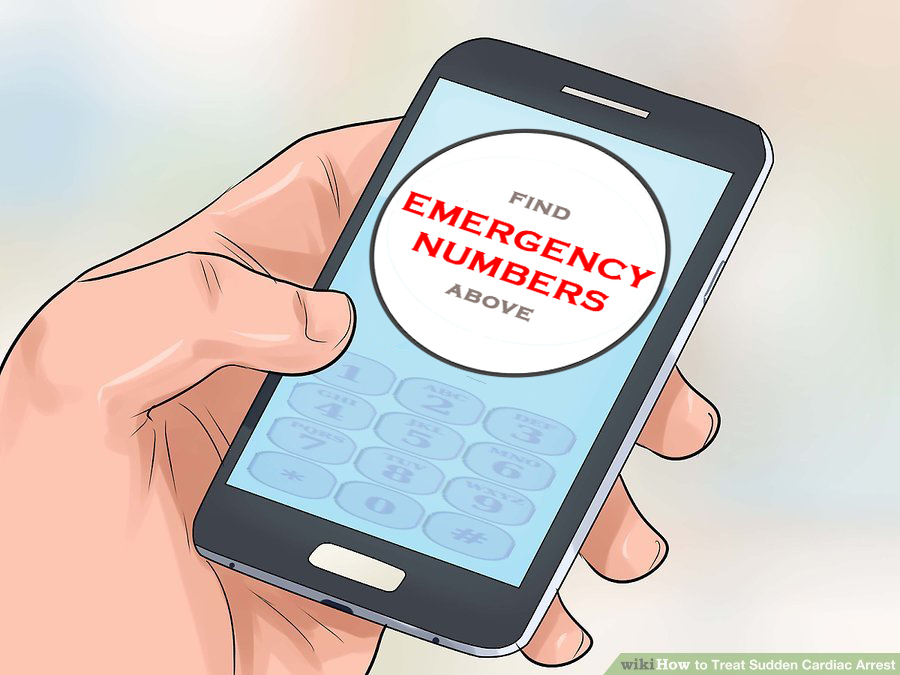
3. Care for the person
Caring for someone who has just gone through serious trauma includes both physical treatment and emotional support. Remember to stay calm and try to be reassuring; let the person know that help is on its way and that everything will be alright. Other ways to reassure the casualty include asking for their name, if they know what has happened, and then about their interests.
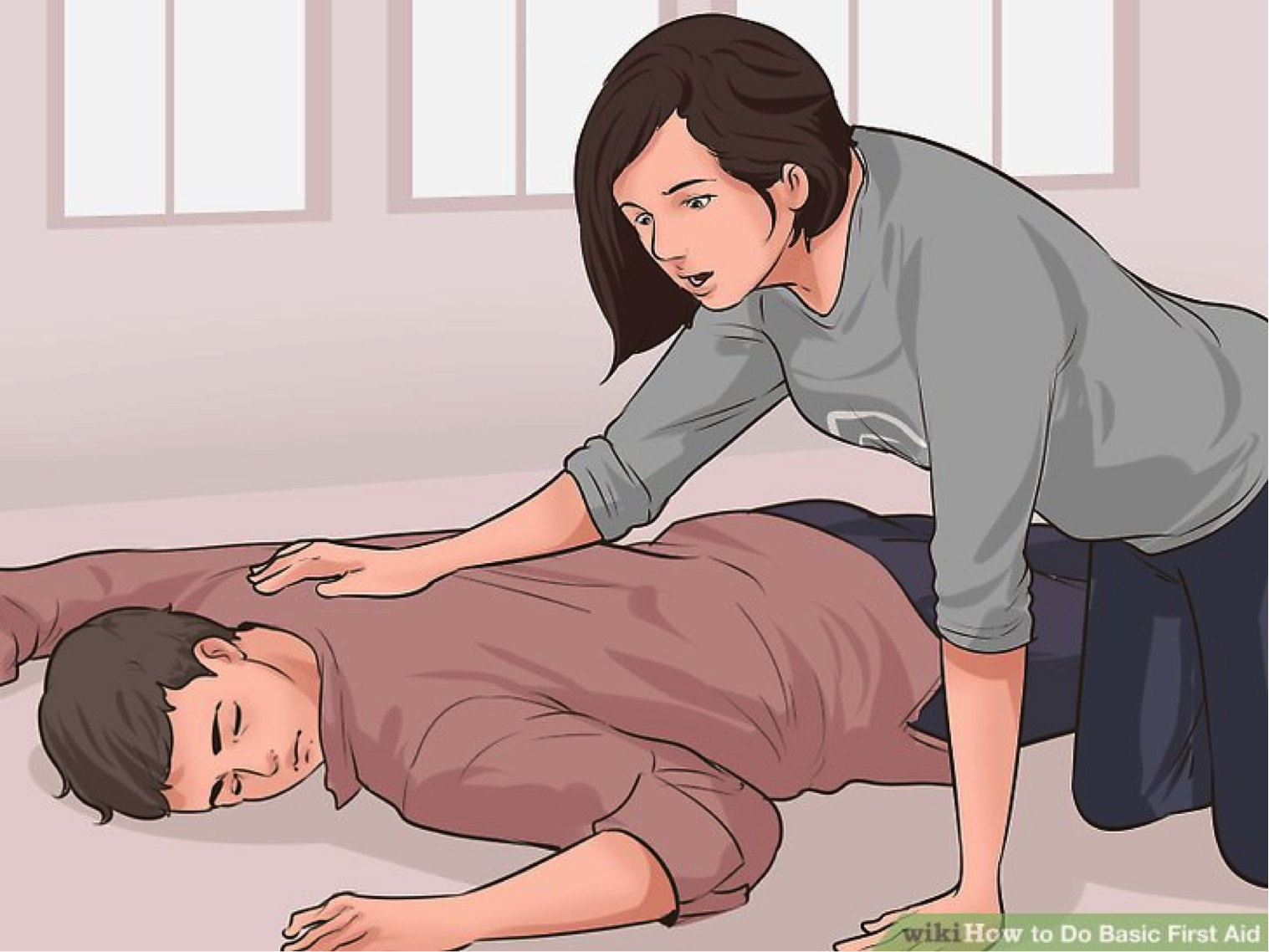
2: Caring for an Unconscious Person
1. Determine responsiveness
If a person is unconscious, try to rouse them by speaking to them or by tapping at the shoulder. do not be afraid to speak loudly or even shout. If they do not respond to activity, sound, touch, or other stimulation, determine whether they are breathing.
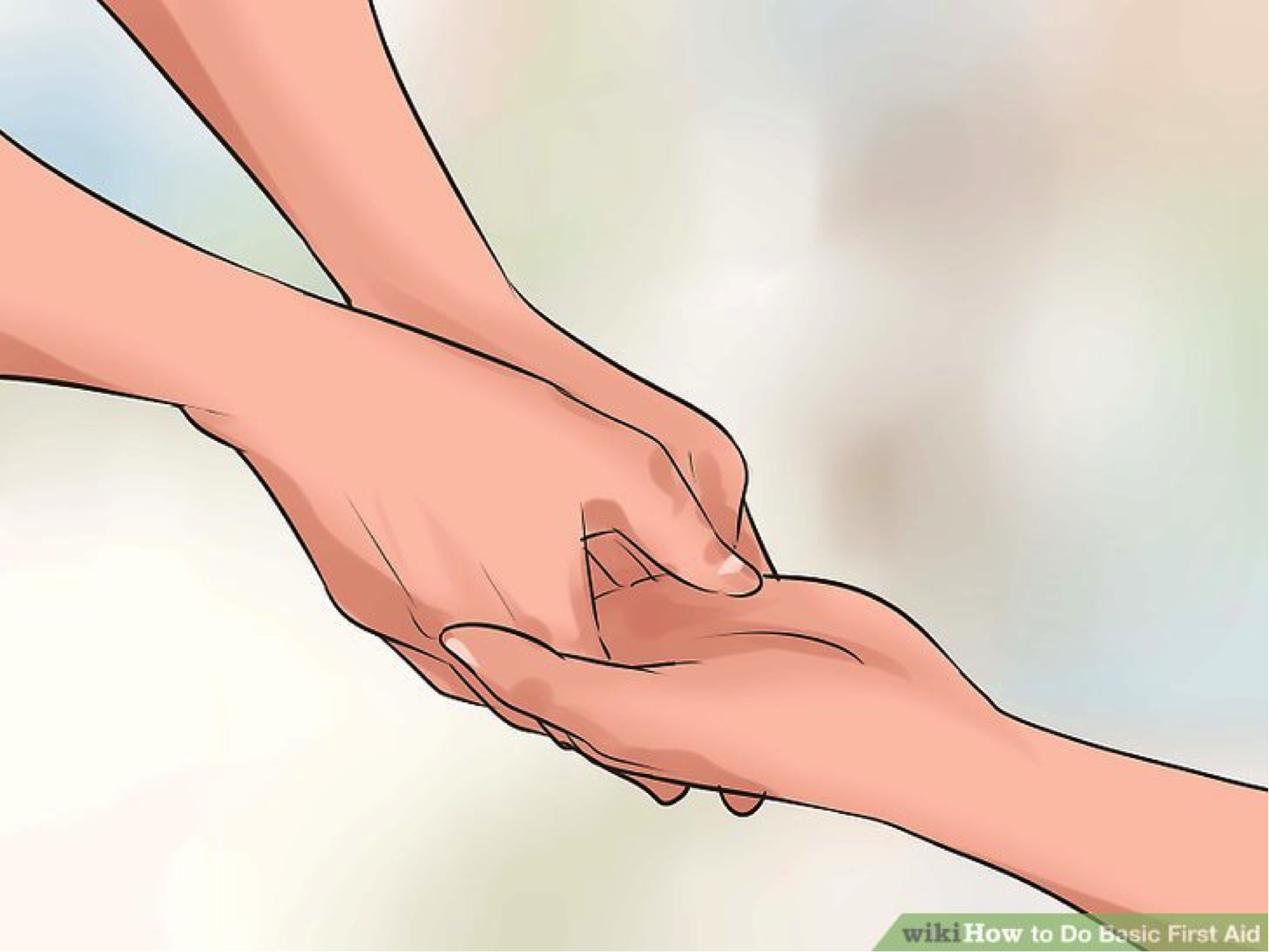
2. Check for breathing and a pulse
If unconscious and unable to be roused, check for breathing: look for a rise in the chest area; listen for the sound of air coming in and out; feel for air using the side of your face. If no signs of breathing are apparent, place two fingers under the chin and gently guide the face pointing upwards to open up their airways. If any debris such as vomit can be seen, it is appropriate to move them onto their side to allow it to get out, which is achieved with the recovery position. Check for a pulse.
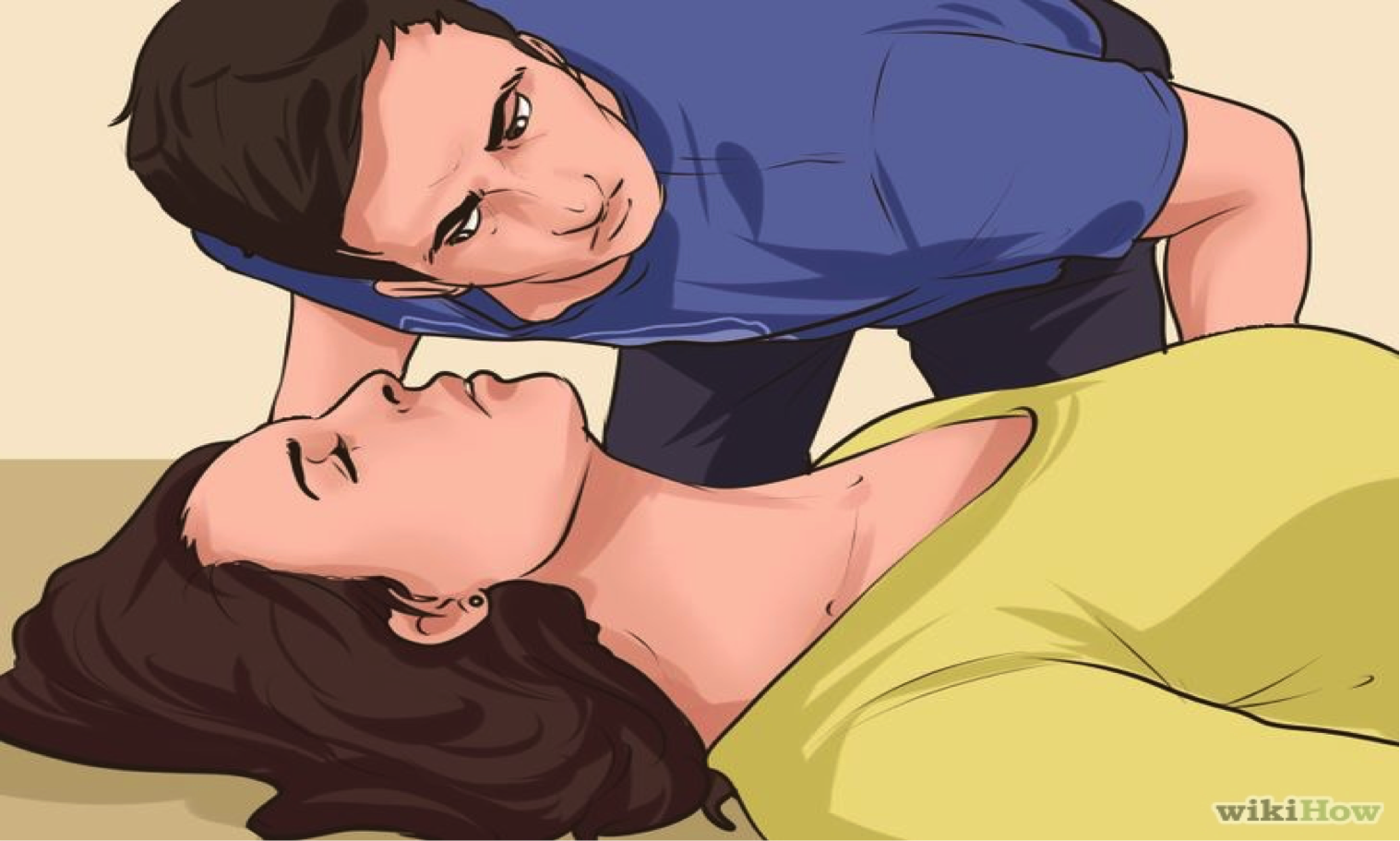
3. If the person remains unresponsive, prep for CPR
Unless you suspect a spinal injury, carefully roll them onto their back and open their airway. If you suspect a spinal injury, leave the person where they are, provided they are breathing.
- Keep the head and neck aligned.
- Carefully roll them onto their back while holding their head.
- Open the airway by lifting the chin.
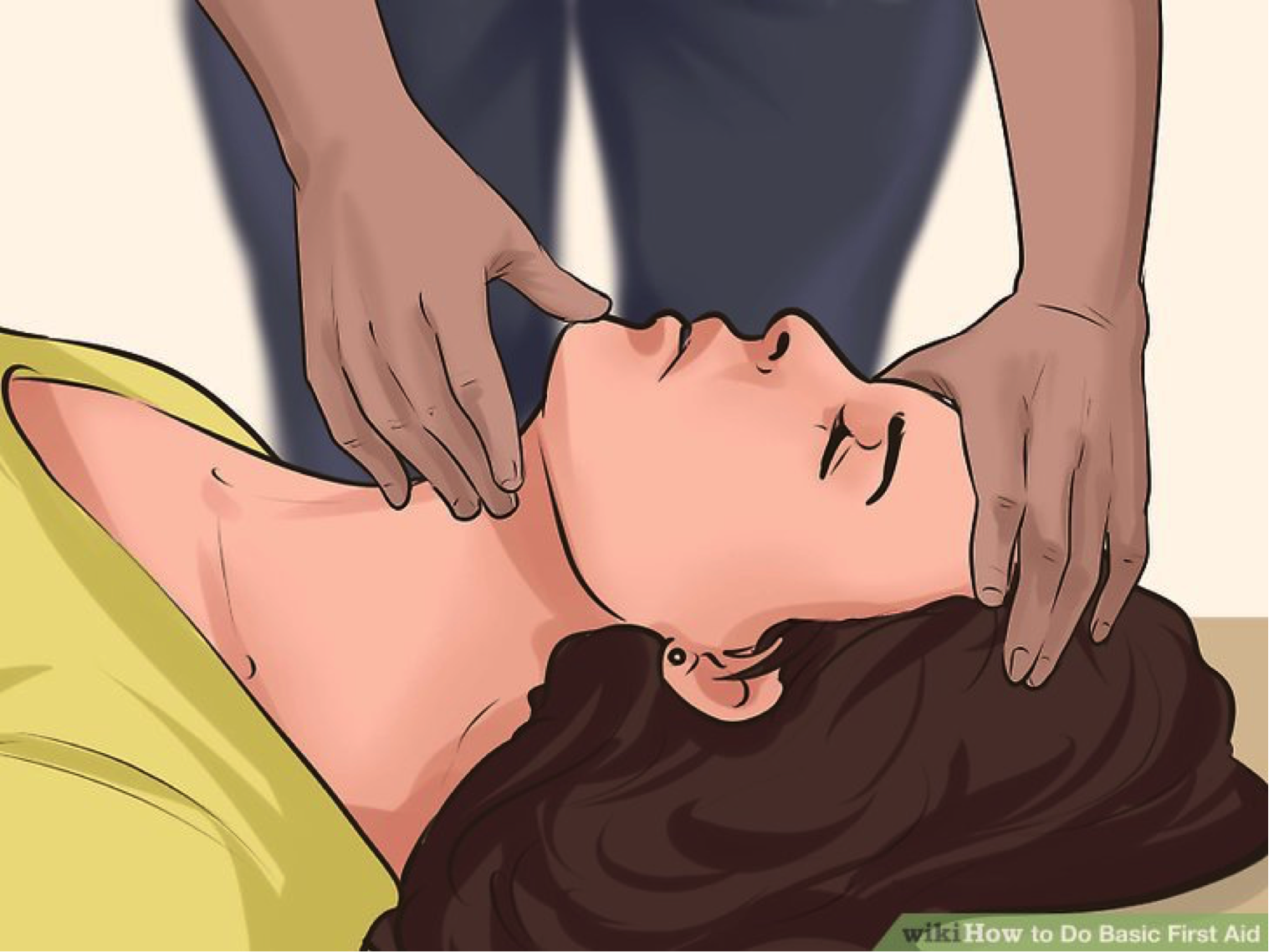
4. Perform 30 chest compressions and two rescue breaths as part of CPR
In the center of the chest, just below an imaginary line running between the nipples, put your two hands together and compress the chest down approximately 2 inches (5.1 cm) at a rate of 100 compressions per minute (or to the beat of "Staying Alive"). After 30 compressions, give two rescue breaths, done by opening the airways, closing the nose and fully covering the mouth hole. Then check vitals. If the breaths are blocked, reposition the airway. Make sure the head is tilted slightly back and the tongue is not obstructing it. Continue this cycle of 30 chest compressions and two rescue breaths until someone else relieves you.
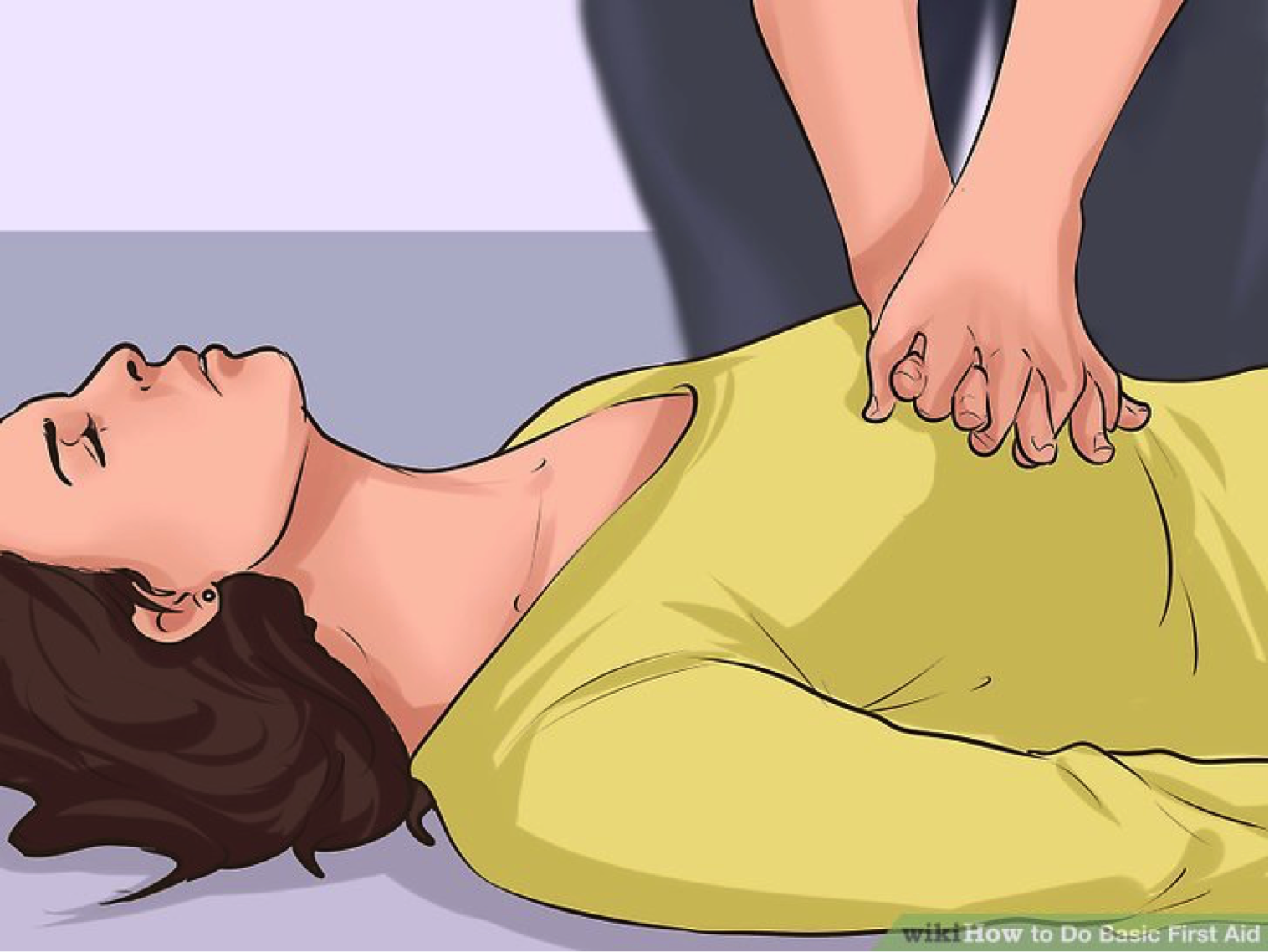
5. Remember your ABCs of CPR
The ABCs of CPR refer to the three critical things you need to look for. Check these three things frequently as you give the person first aid CPR.
- Airway: Does the person have an unobstructed airway?
- Breathing: Is the person breathing?
- Circulation: Does the person show a pulse at major pulse points (wrist, carotid artery, groin)?
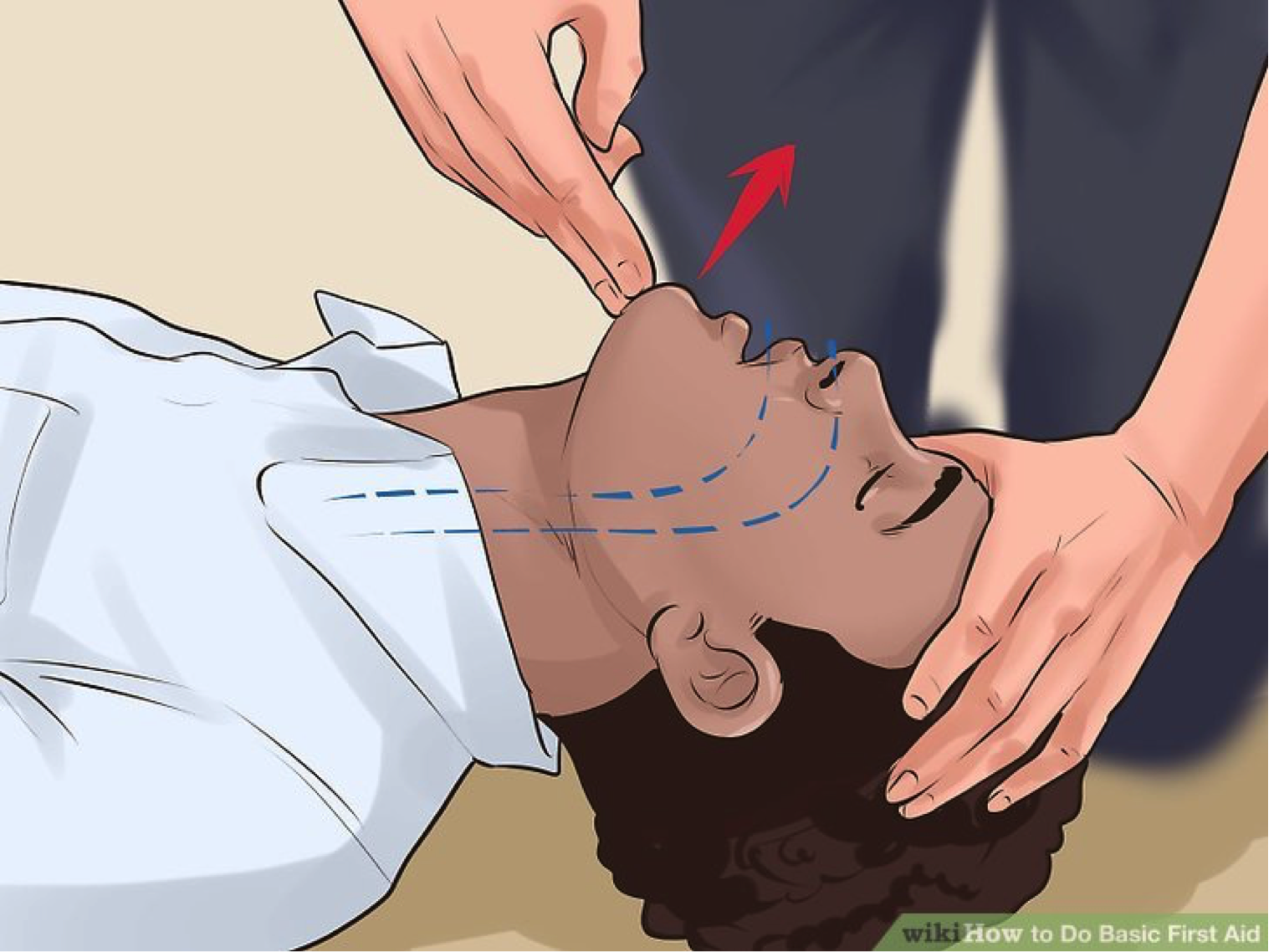
6. Make sure the person is warm as you wait for medical help
Drape a towel or a blanket over the person if you have one; if you don't, remove some of your own clothing (such as your coat or jacket) and use it as a cover until medical help arrives. However, if the person has a heatstroke, do not cover him or keep him warm. Instead try to cool him by fanning him and damping him.
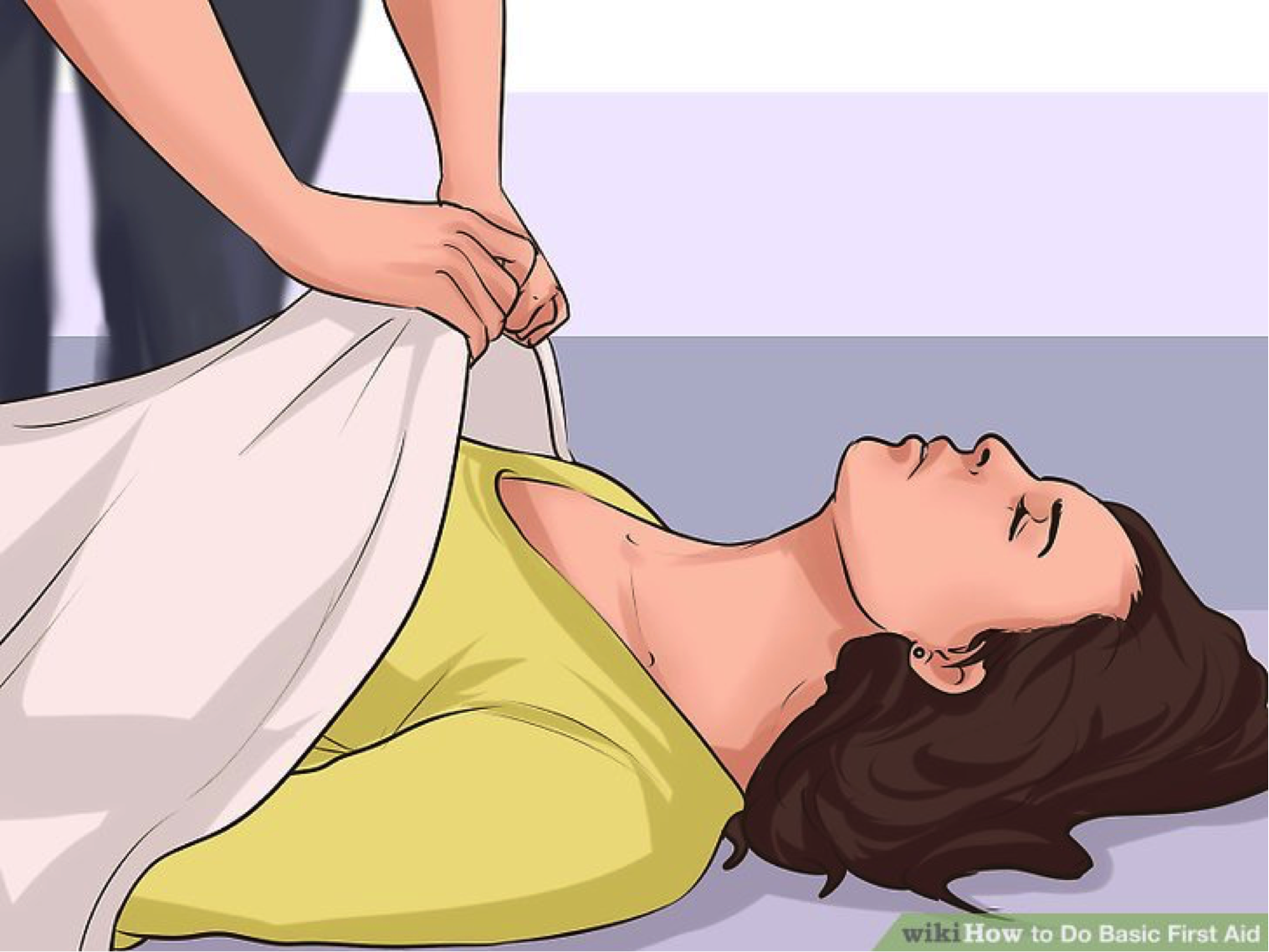
7. Pay attention to a list of don'ts
As you administer first aid, be sure to be aware of these things that you should not do in any case:
- Do not feed or hydrate an unconscious person. This could cause choking and possible asphyxiation.
- Do not leave the person alone. Unless you absolutely need to signal or call for help, stay with the person at all times.
- Do not prop up an unconscious person's head with a pillow.
- Do not slap or splash with water an unconscious person's face. These are movie gimmicks.
- If the person appears in danger due to an electric shock, you may attempt to move it, but only with a non-conductive object.

3: Treating Common Problems In First Aid Scenarios
1. Protect yourself from bloodborne pathogens
Bloodborne pathogens can threaten your health and wellbeing by causing sickness and disease. If you have a first aid kit, sanitize your hands and put on sterile gloves. If sterile gloves and sanitizer are not available, protect your hands with extra gauze or cotton. Avoid direct contact with the other person's blood. If you do end up making contact, make sure to clean yourself off as soon as possible. Eliminate any remaining sources of contamination.
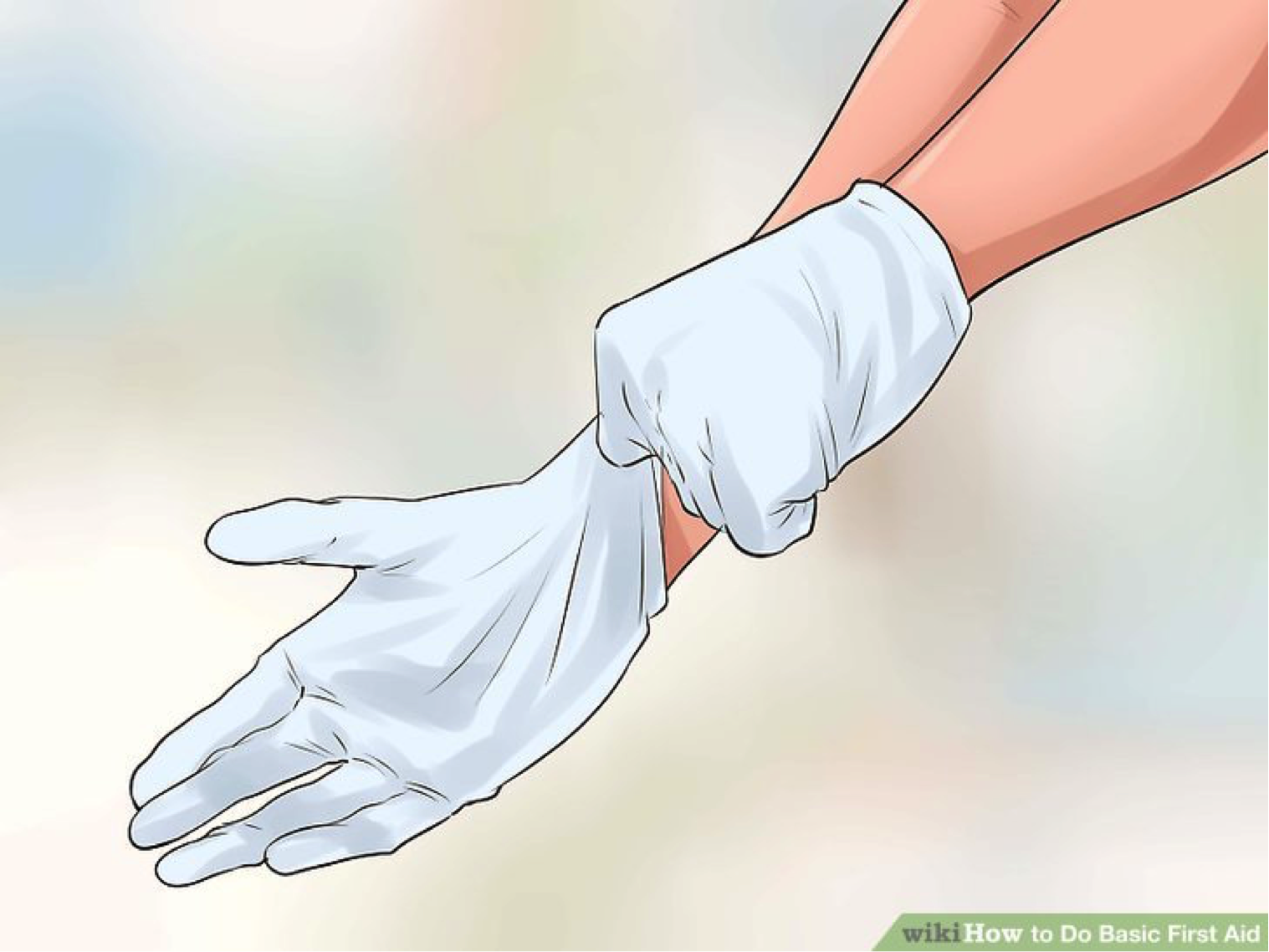
2. Stop the bleeding first
After you have established that the victim is breathing and has a pulse, your next priority should be to control any bleeding. Control of bleeding is one of the most important things you can do to save a trauma victim. Use direct pressure on a wound before trying any other method of managing bleeding. Read the linked article for more detailed steps you can take.
- Treat a bullet wound: Bullet wounds are serious and unpredictable. Read on for special considerations when treating someone who has suffered a gunshot wound.
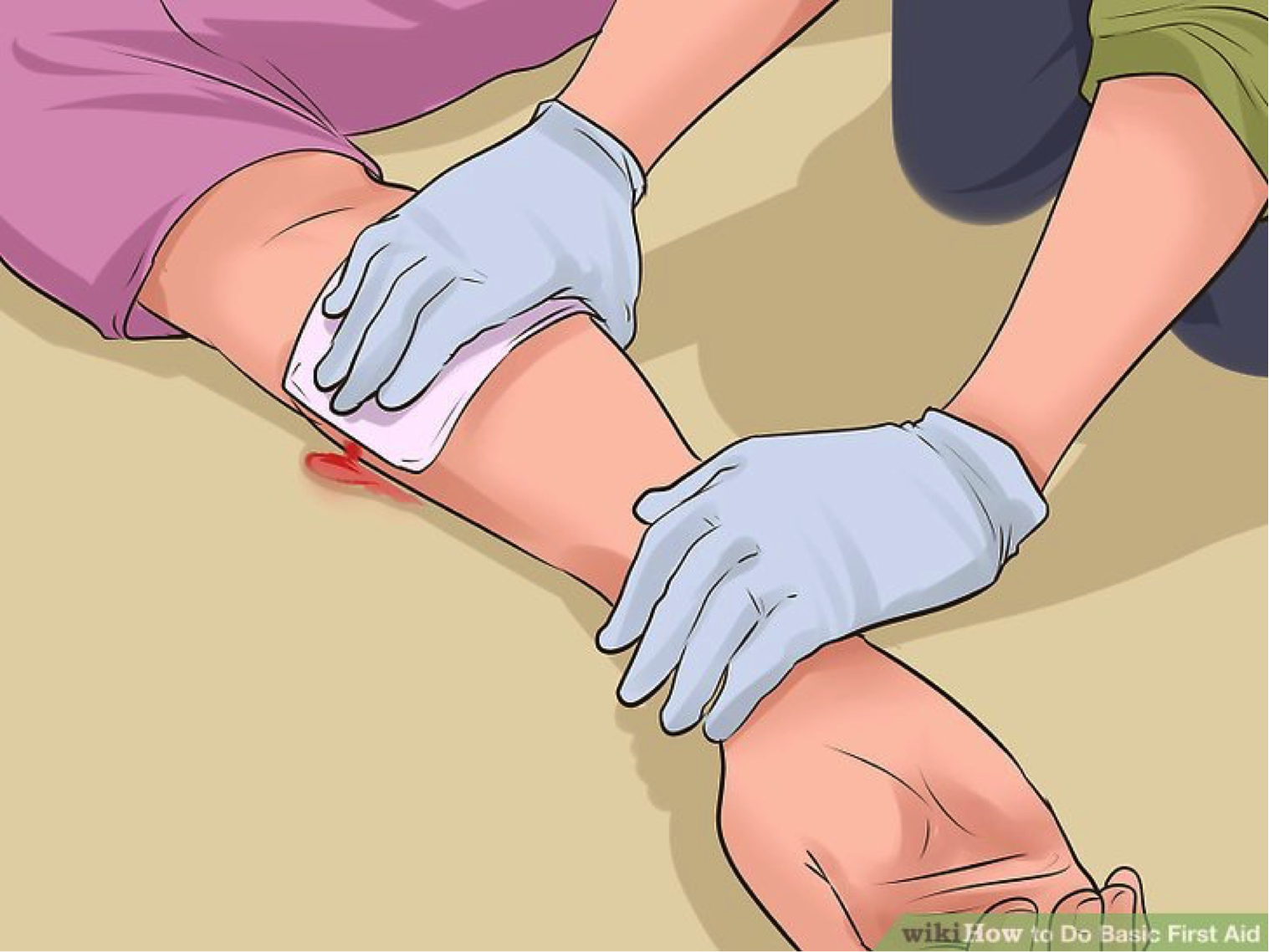
3. Treat shock next
Shock, often caused a loss of blood flow to the body, frequently follows physical and occasionally psychological trauma. A person in shock will frequently have cool, clammy skin, be agitated or have an altered mental status, and have pale color to the skin around the face and lips. Untreated, shock can be fatal. Anyone who has suffered a severe injury or life-threatening situation is at risk for shock.
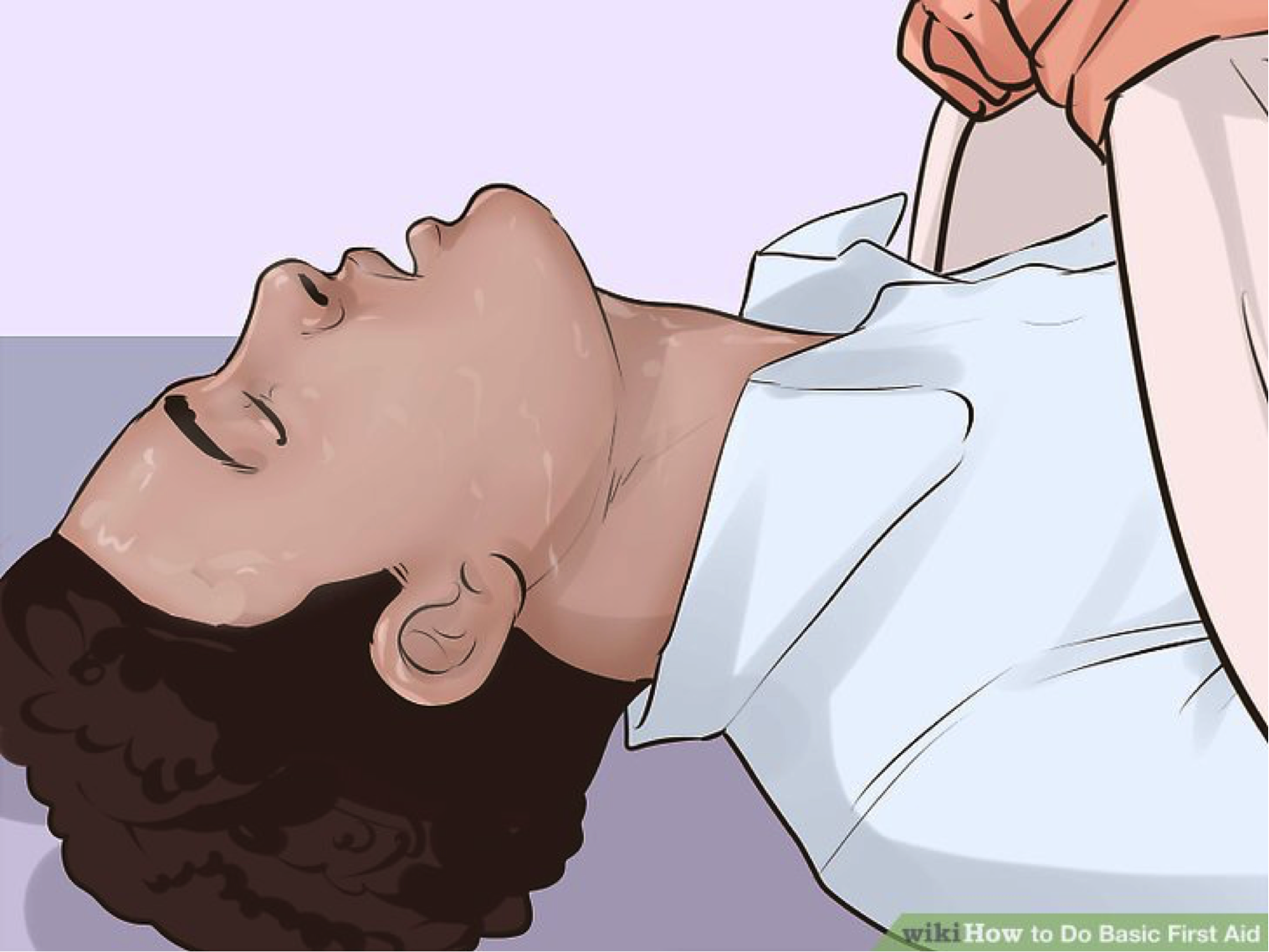
4. Provide first aid for a broken bone
A broken bone, however common, can be treated with the following steps:
- Immobilize the area: Make sure that the broken bone doesn't have to move or support any other body parts.
- Numb the pain: Often, this can be done with an ice-pack covered by a towel.
- Make a splint: A bundle of newspapers and sturdy tape will do just the trick. A broken finger, for example, can also use another finger as a stabilizing splint.
- Make a sling, if necessary. Tie a shirt or a pillowcase around a broken arm and then around the shoulder.
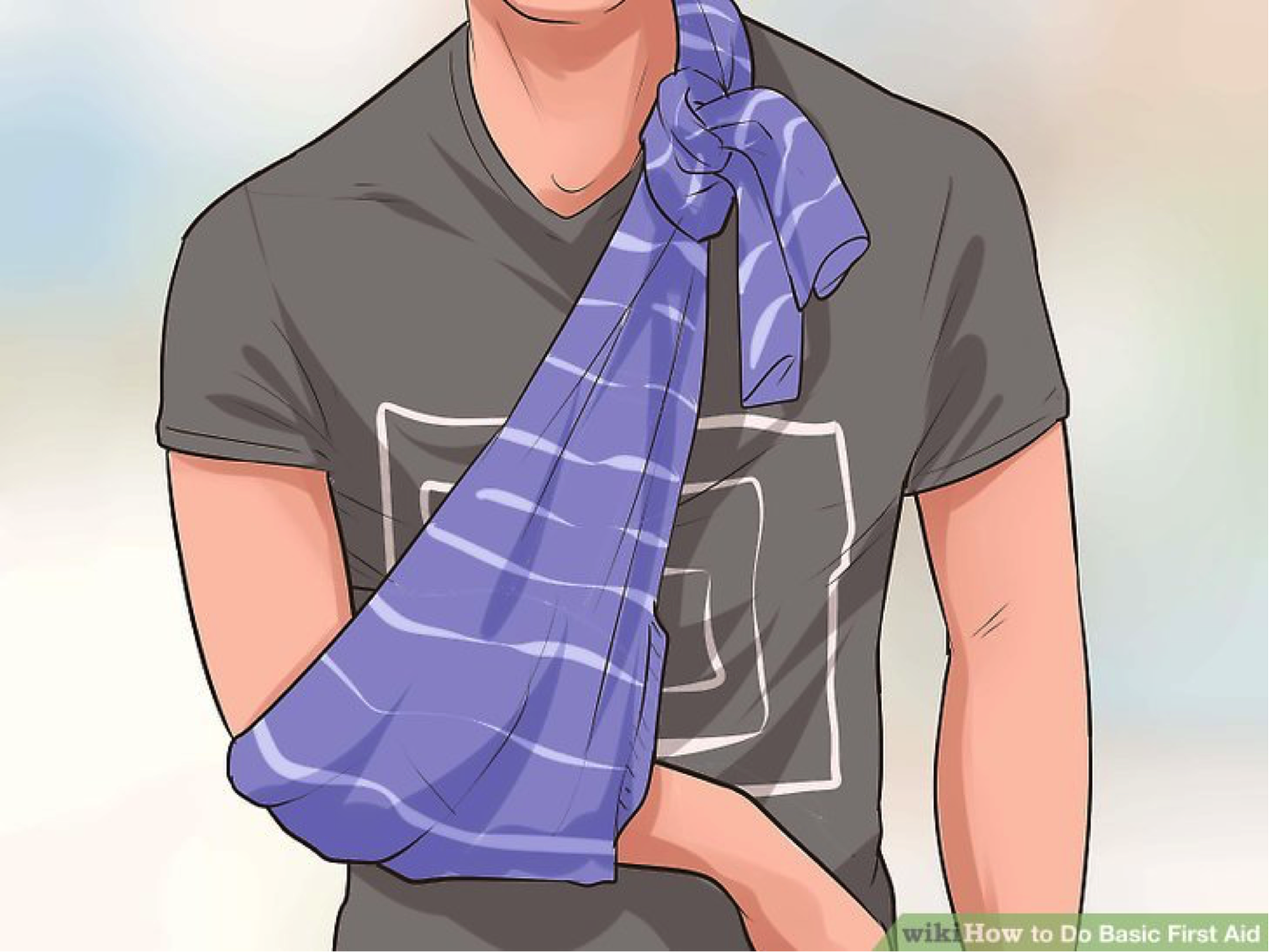
5. Help a choking victim
Choking can cause death or permanent brain damage within minutes. Read this article for ways to help a choking victim. The article addresses helping both children and adult choking victims.
- One of the ways to help a choking victim is the Heimlich maneuver. The Heimlich maneuver is performed by straddling the victim from behind and bear-hugging them with your hands interlocked above their belly-button but beneath their breastbone. Thrust upward to expel air from the lungs and repeat until you are successful in clearing the object from the windpipe.
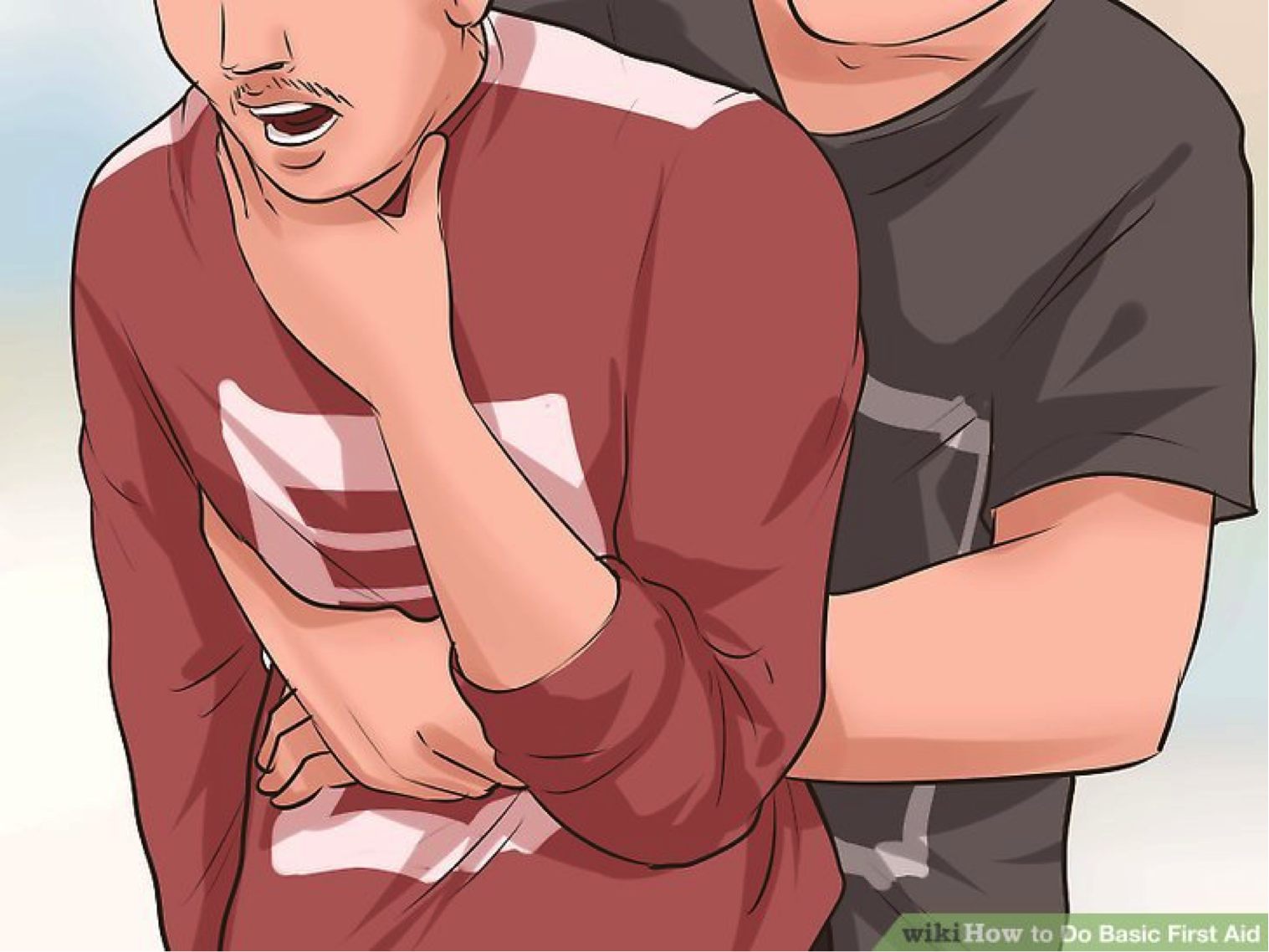
6. Learn how to treat a burn
reat first- and second-degree burns by immersing or flushing with cool water for at least 10 minutes (no ice). Don't use creams, butter or other ointments, and do not pop blisters. Third degree burns should be covered with a damp cloth. Remove clothing and jewelry from the burn, but do not try to remove charred clothing that is stuck to burns.
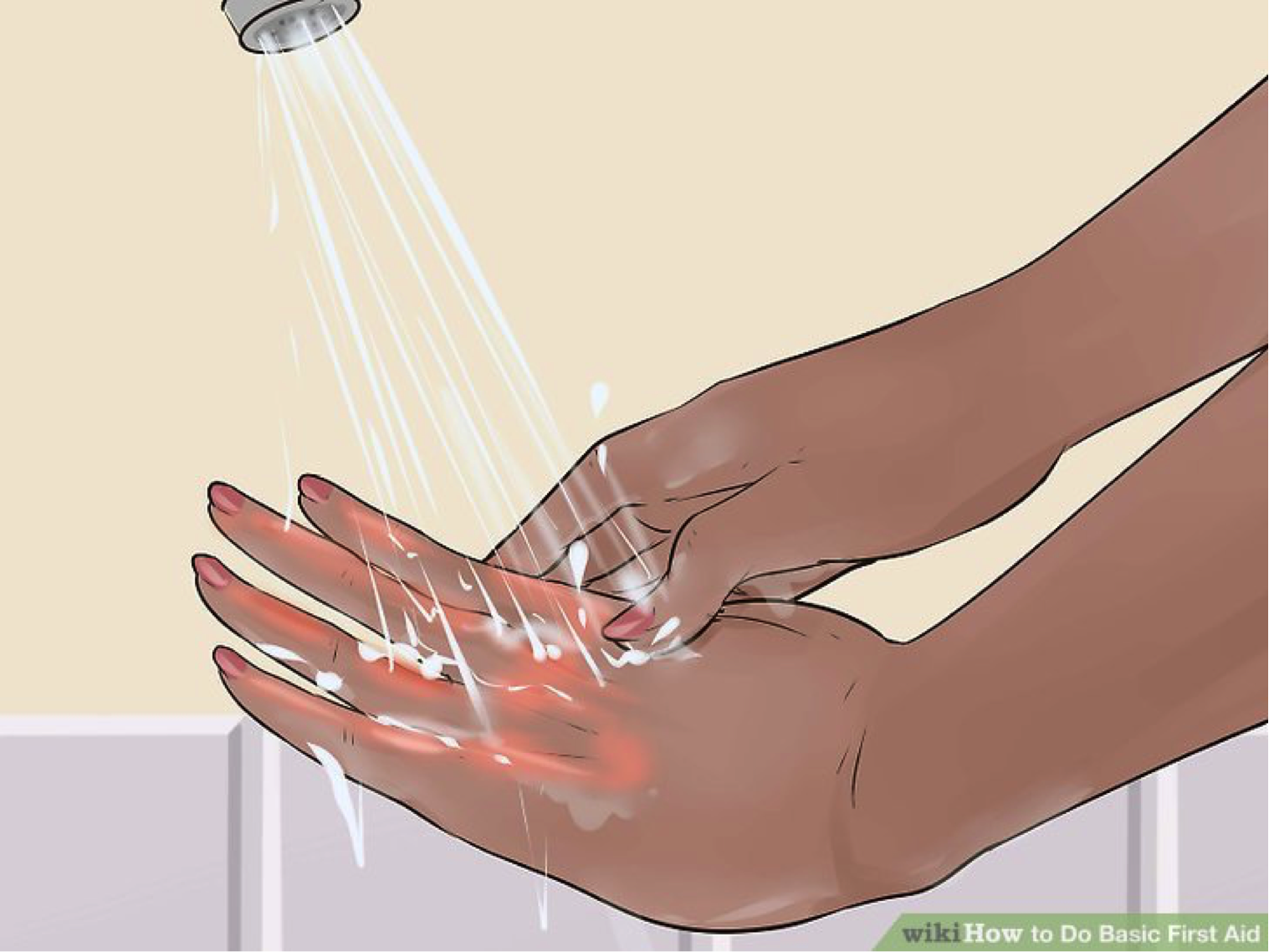
7. Look out for a concussion
If the victim has suffered a blow to the head, look for signs of concussion.
Common symptoms include:
- Loss of consciousness following the injury
- Disorientation or memory impairment
- Vertigo
- Nausea
- Lethargy.
- loss of memory of recent events(short terms memories)
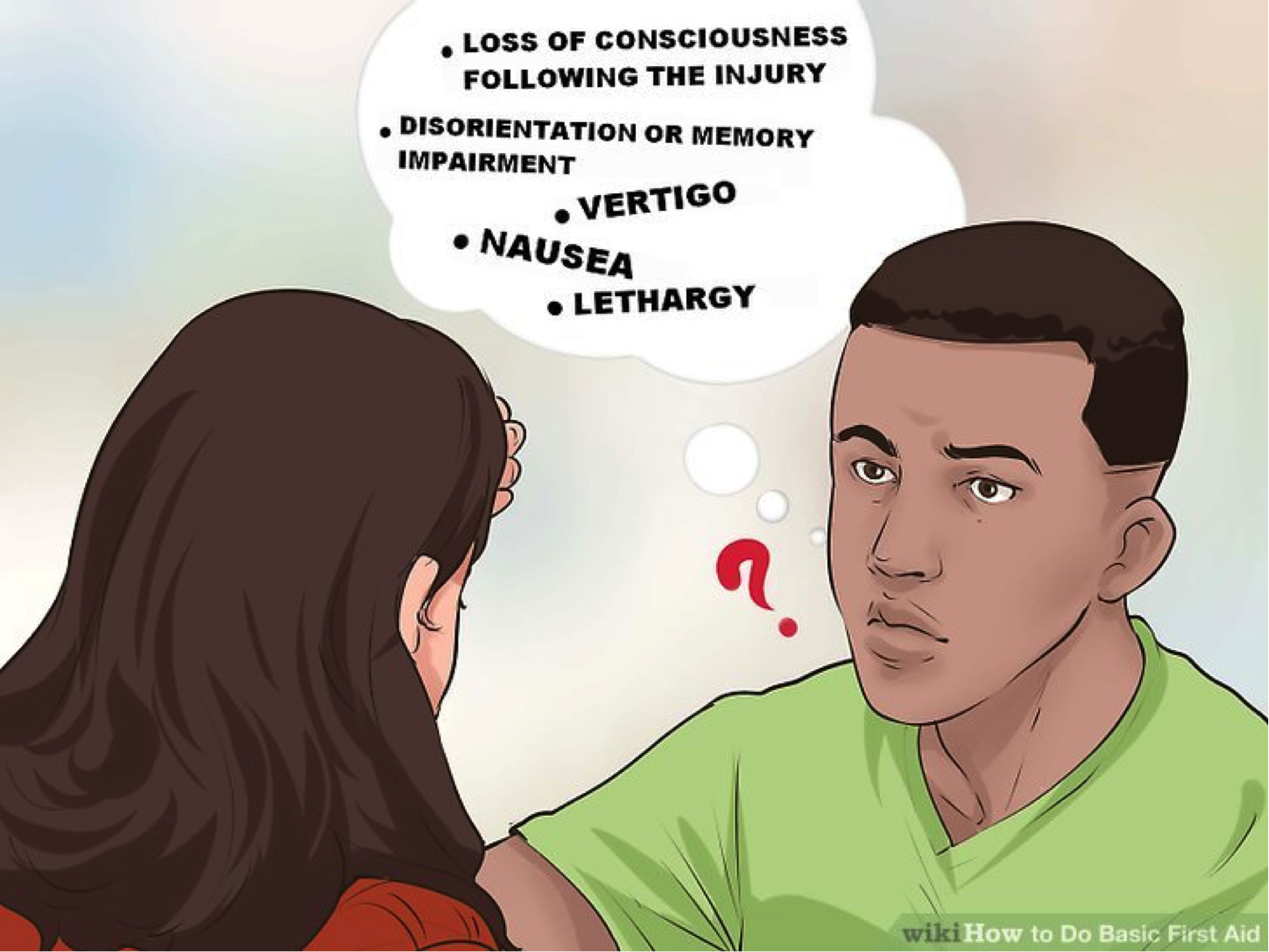
8. Treat a Spinal Injury Victim
If you suspect a spinal injury, it is especially critical that you not move the victim's head, neck or back unless they are in immediate danger. You also need to take special care when performing rescue breathing or CPR. Read this article to learn what to do.
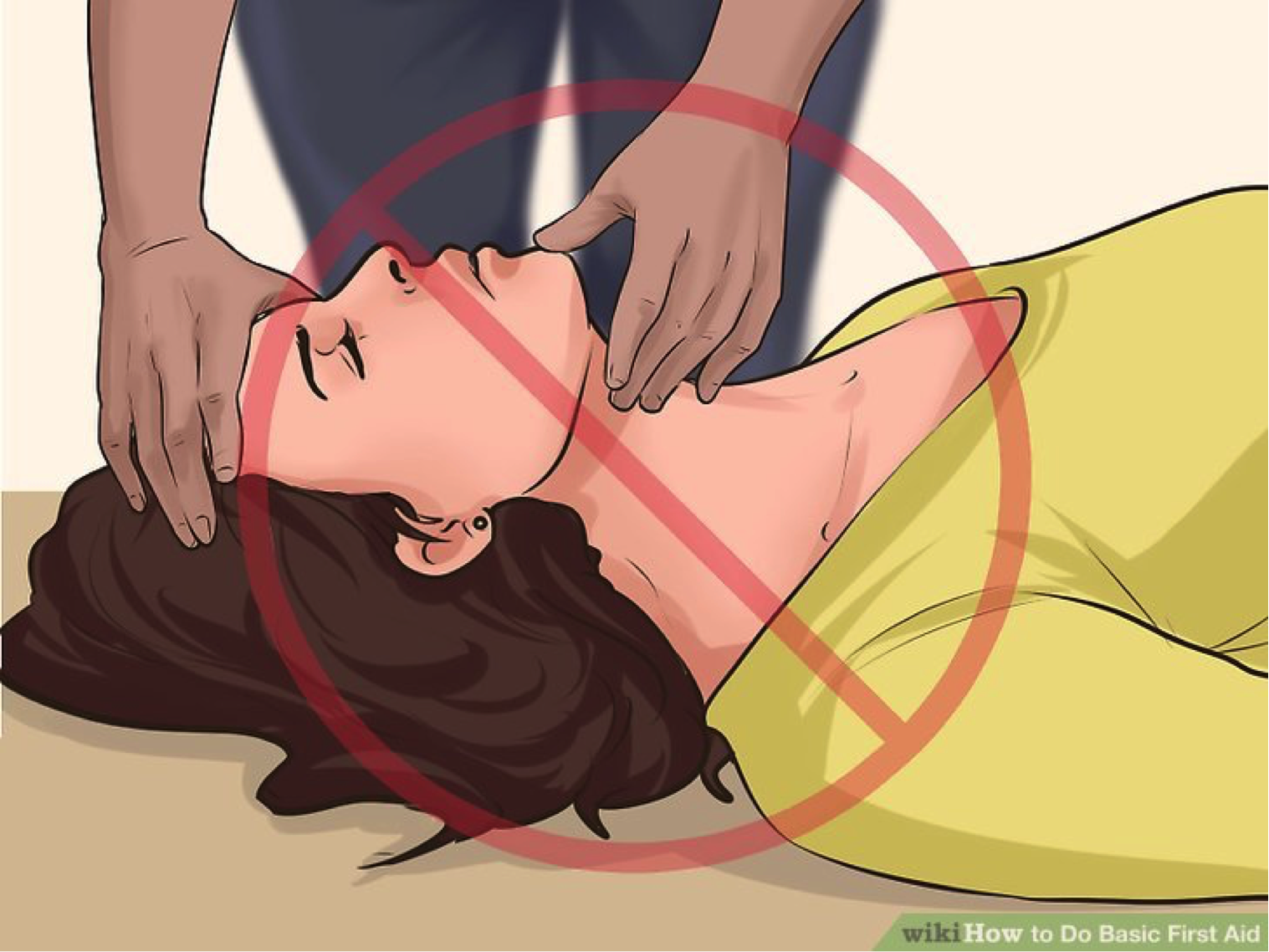
4: Treating Rarer Cases in First Aid Scenarios
1. Help someone who is having a seizure
Seizures can be scary things for people who've never experienced them before. Luckily, helping people with seizures is relatively straightforward.
- Clear the surroundings to protect the person from hurting themselves.
- Activate emergency medical services if the seizure lasts more than 5 minutes or if the person is not breathing afterwards (see "EMERGENCY NUMBERS" above).
- After the episode has ended, help them to the floor and put something soft or flat under their head. Turn them onto their side to ease breathing, but do not hold the person down or try to stop their movements.
- Be friendly and reassuring as their consciousness returns and do not offer food or water until fully alert.
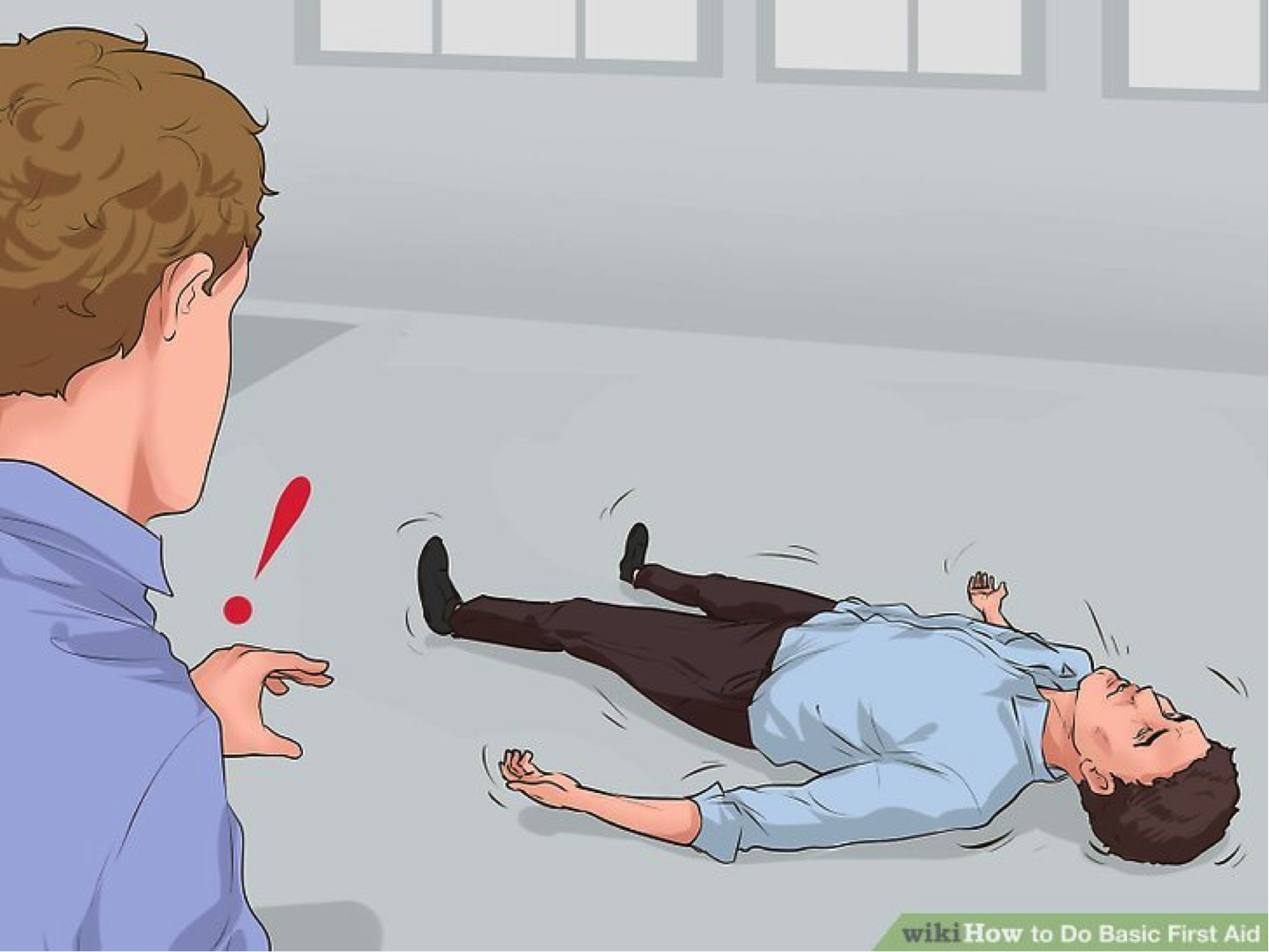
2. help someone survive a heart attack
It helps to know the symptoms of heart attack, which can include rapid heartbeat, pressure or pain in the chest, throat or even pain in the armpit, and general unease, sweating or nausea. Rush the person to the hospital immediately while giving them an aspirin or a nitroglycerin, which the person should chew.
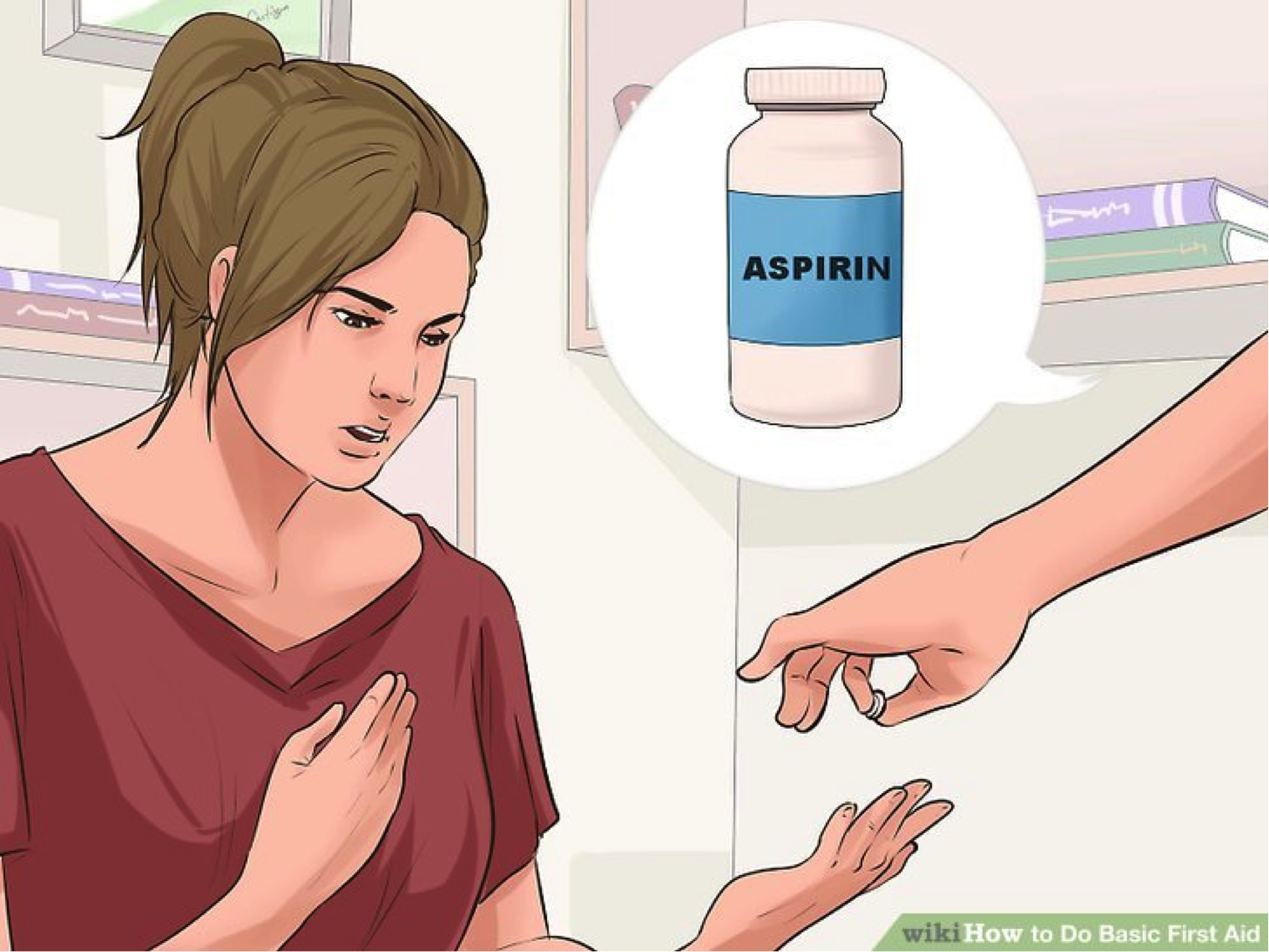
3. Identify someone having a stroke
Again, knowing the symptoms of stroke is important. They include temporary inability to talk or understand what is being said; confusion; loss of balance or dizziness; unable to raise their arms and severe headache with no precursor, among others. Rush a person you suspect has had a stroke to the emergency room immediately.
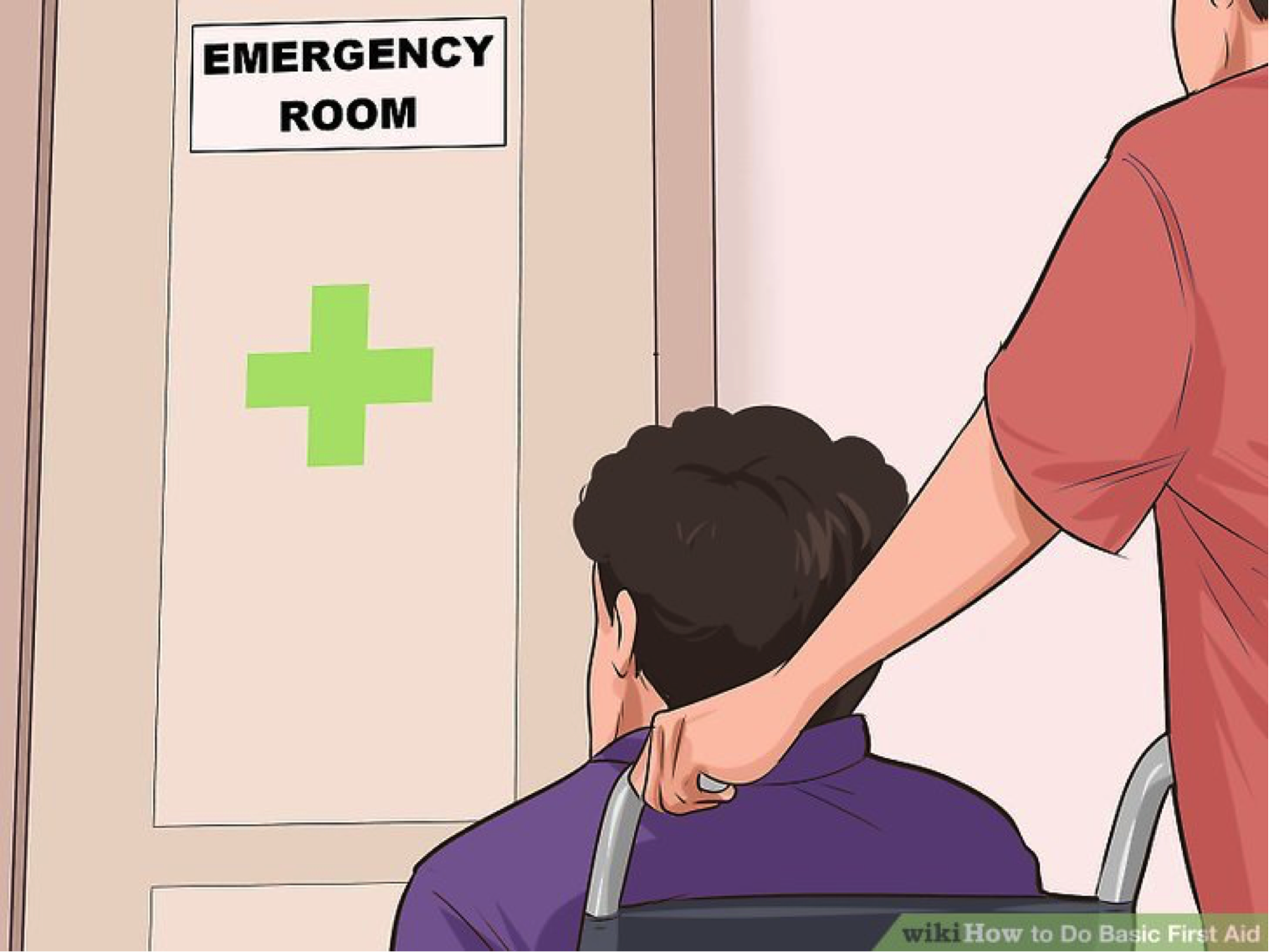
4. Treating Posion
Poisoning can occur as a result of natural toxins (i.e. snake bite) or chemical combinations. If an animal may be responsible for poisoning, try to (safely) kill it, bag it, and bring it with you to poison control.
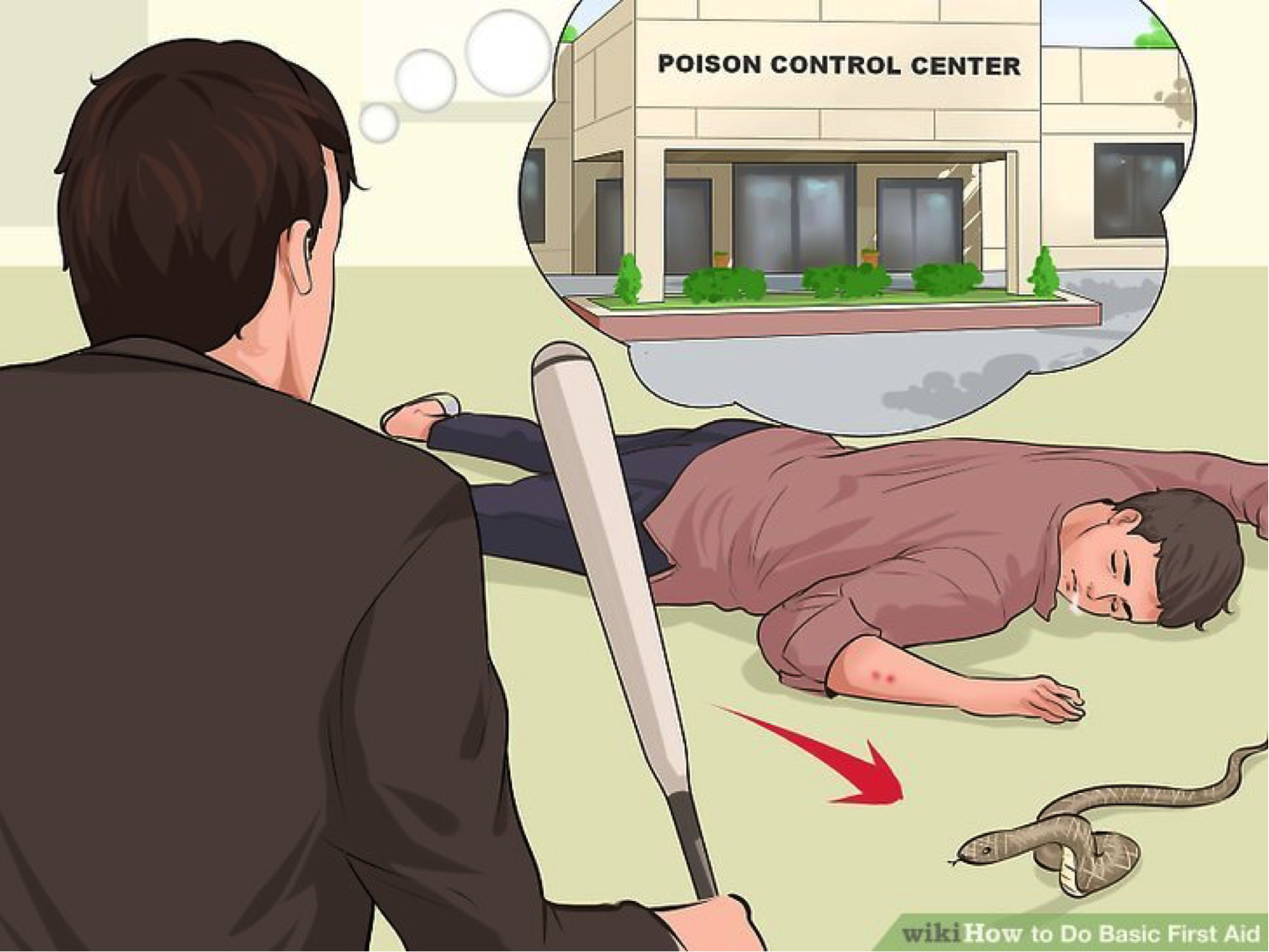
_______________________________________________________________________________________________________________________
Are you a healthcare practitioner who enjoys patient education, interaction and communication?
If so, we invite you to criticise, contribute to or help improve our content. We find that many practicing doctors who regularly communicate with patients develop novel and often highly effective ways to convey complex medical information in a simplified, accurate and compassionate manner.
MedSquirrel is a shared knowledge, collective intelligence digital platform developed to share medical expertise between doctors and patients. We support collaboration, as opposed to competition, between all members of the healthcare profession and are striving towards the provision of peer reviewed, accurate and simplified medical information to patients. Please share your unique communication style, experience and insights with a wider audience of patients, as well as your colleagues, by contributing to our digital platform.
Your contribution will be credited to you and your name, practice and field of interest will be made visible to the world. (Contact us via the orange feed-back button on the right).
Disclaimer:
MedSquirrel is a shared knowledge, collective intelligence digital platform developed to share medical knowledge between doctors and patients. If you are a healthcare practitioner, we invite you to criticise, contribute or help improve our content. We support collaboration among all members of the healthcare profession since we strive for the provision of world-class, peer-reviewed, accurate and transparent medical information.
MedSquirrel should not be used for diagnosis, treatment or prescription. Always refer any questions about diagnosis, treatment or prescription to your Doctor.
